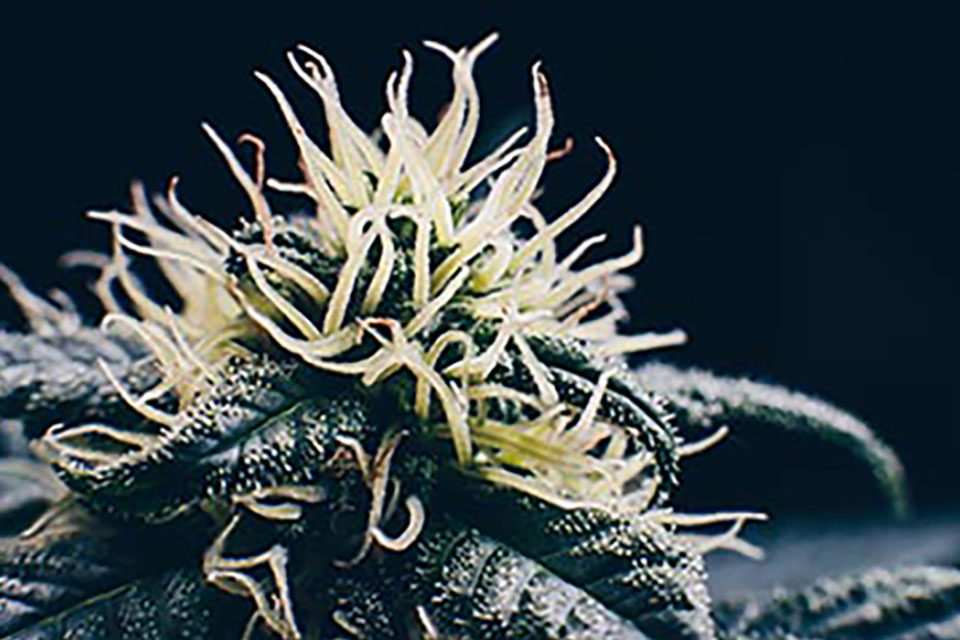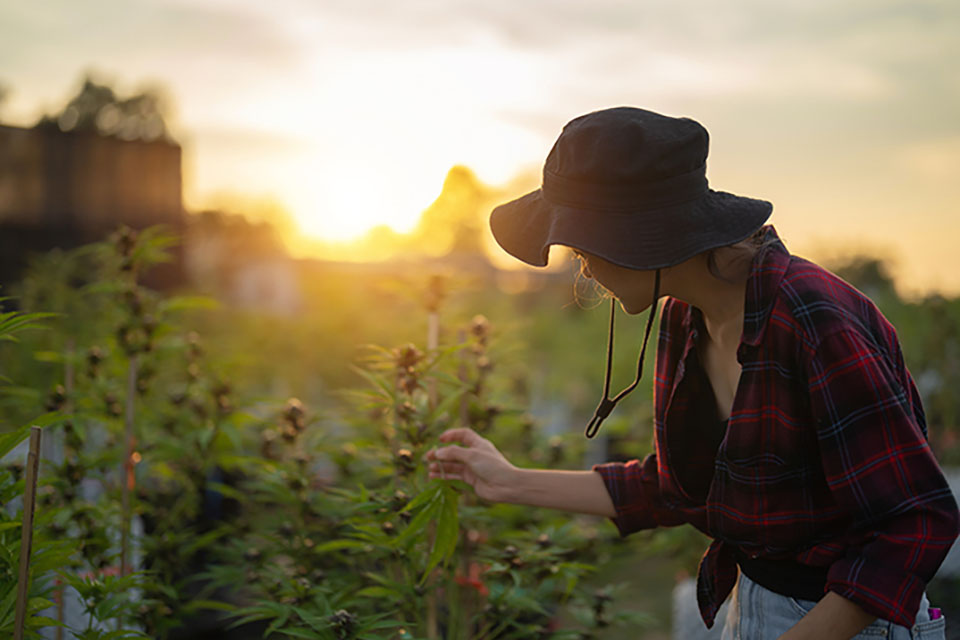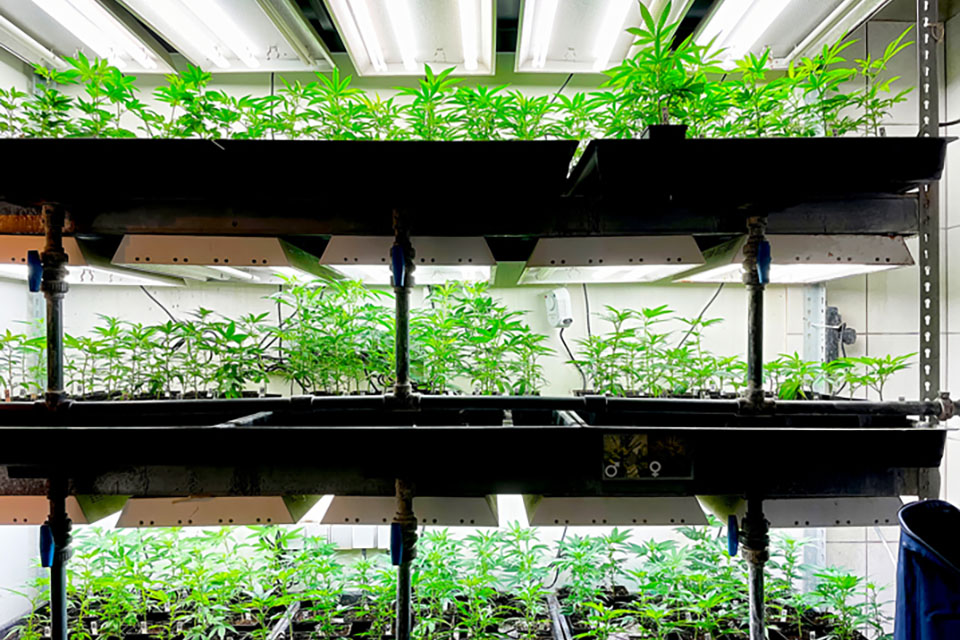
Indoor cannabis growing is a rewarding experience, but it requires careful attention to detail to ensure optimal results. From lighting and temperature control to nutrient management and pest control, multiple factors allow you to optimize your indoor cannabis growing environment to maximize yields and quality. Whether you are a beginner or a seasoned grower, you can take your indoor cannabis cultivation to the next level by creating the perfect environment for your cannabis plants to thrive.
Lighting for Indoor Cannabis Growing
The spectrum of light your plants receive significantly affects their growth. Blue light is essential during the vegetative stage as it encourages bushy growth, while red light promotes flowering. Full-spectrum lights, which cover both ends of the spectrum, are ideal, as they can support a cannabis plant through all its stages of growth.
As for light intensity, cannabis plants typically need a minimum of 2,000 lumens per square foot during the vegetative stage and approximately 5,000 lumens per square foot during the flowering stage. Too much light can be harmful, causing issues like light burn. However, not enough light will decrease plant quality and yield.
Temperature and Humidity Control
Controlling temperature and humidity is a crucial aspect of optimizing your indoor cannabis growing environment. Cannabis plants have a specific comfort zone in which they thrive. Deviating too far from these ideal conditions can lead to slower growth, lower yields, and other health issues.
Ideal Temperature Range for Different Growth Stages
Cannabis plants perform best when temperatures during the day range from 70-85 degrees Fahrenheit during the vegetative stage. They do best between 70 and 80 degrees Fahrenheit during the flowering stage. Nighttime temperatures should be cooler, but not more than 10 degrees lower than the day temperature. This will avoid shocking the plants.
Humidity Levels and Management
In the early vegetative stage, cannabis thrives in higher humidity levels of around 70%, but as the plant matures, you should gradually reduce these levels. By the late flowering stage, the ideal relative humidity should be around 40%.
Too much humidity, especially in the flowering stage, can lead to the growth of mold and mildew. Too little, on the other hand, can cause plants to become dehydrated. Monitoring and adjusting humidity levels are essential for the health and productivity of your cannabis plants.
Air Circulation and Ventilation
Air circulation is crucial for a couple of reasons: firstly, it strengthens plants by simulating a natural outdoor breeze, leading to sturdier stems; secondly, it helps reduce the risk of fungal diseases by keeping the foliage dry and making it harder for mold spores to settle down. For good air circulation, consider using oscillating fans within your grow room. Ensure that the fans are not directly pointed at the plants to avoid windburn.
Ventilation, on the other hand, involves exchanging the air inside the grow room with fresh air from outside. This is important for replenishing the carbon dioxide (CO2) that your plants need for photosynthesis. A good ventilation system also helps manage temperature and humidity levels.
Nutrient and Water Management
The right balance of nutrients and water is another fundamental aspect of optimizing your indoor cannabis growing environment. Remember, while these elements are vital for your plants’ growth, their overuse can lead to disastrous results.
The amount of water your cannabis plants require primarily depends upon the size of your plants and the ambient temperature. Larger plants, hotter environments, and grow lights that emit more heat will increase evaporation, thereby requiring more frequent watering.
A common practice is to water deeply and then wait until the top inch of the soil has dried out before watering again. The goal is to keep your plants sufficiently hydrated without waterlogging them and risking root rot. Remember that overwatering is a common mistake among new cannabis growers, and it can be just as harmful as underwatering.
Pest Control
Limiting pest populations within your growing environment is imperative to maintaining plant health. Many growers prefer using organic pest control methods to avoid contaminating their plants with harsh chemicals. These methods include introducing beneficial insects, such as ladybugs and predatory mites, that prey on harmful pests. You can also use organic sprays and neem oil to treat infestations.
Training and Pruning Techniques
One often overlooked aspect of optimizing your indoor cannabis growing environment is the use of training and pruning techniques. These methods can significantly enhance your yield by helping to manage plant shape and size, improving light penetration, and targeting energy towards productive growth.
The Right Cannabis Growing Environment Maximizes Yields
While indoor cannabis growing can be challenging, employing the right tools and techniques can result in a successful harvest. Optimizing the growth environment for your plants involves a combination of factors including light, temperature, humidity, air circulation, and pest control. By tailoring these conditions to meet the needs of your cannabis plants, you can significantly improve their health, resulting in higher yields and better-quality crops.



